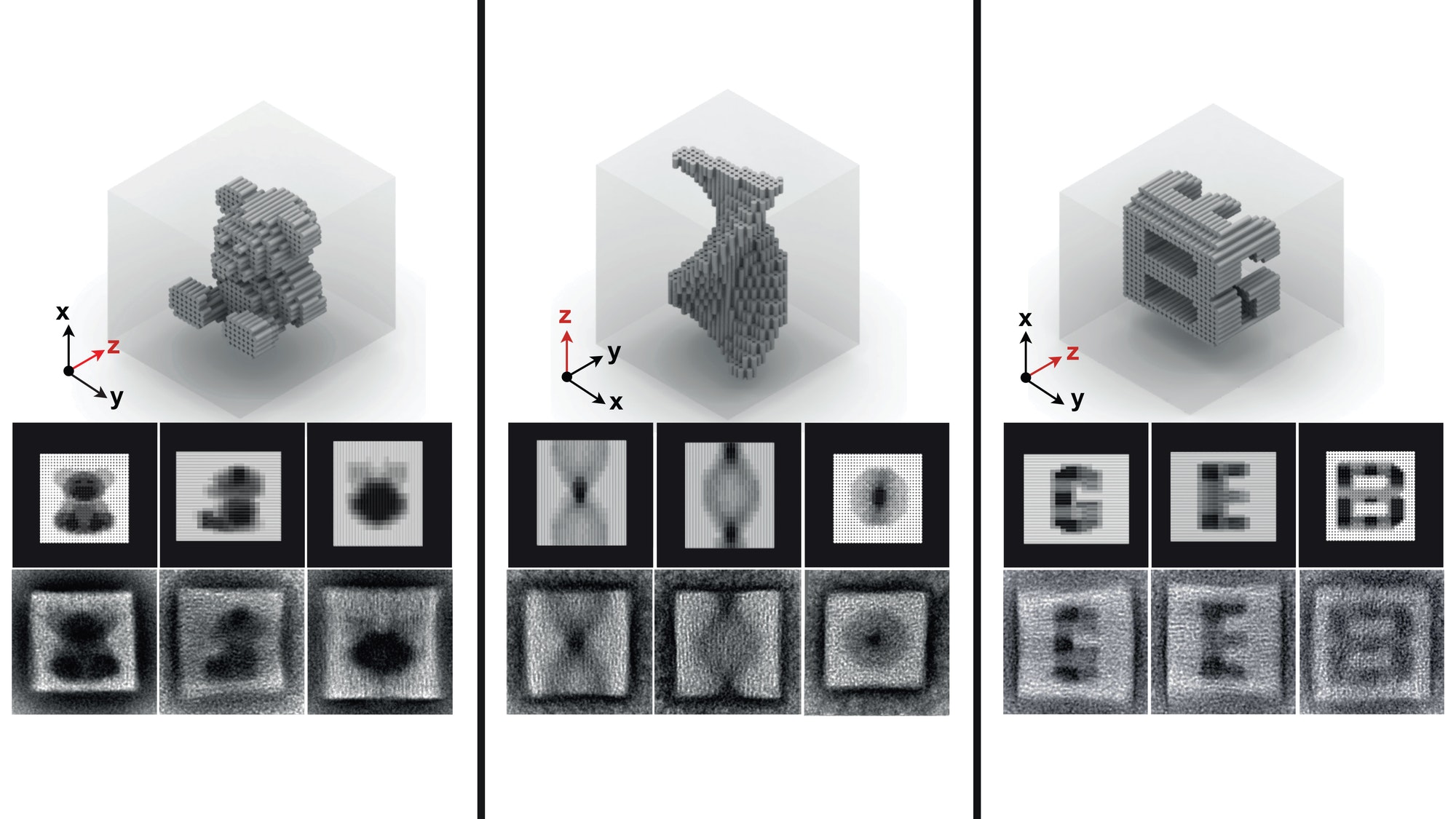Harvard Medical School researchers at the Wyss Institute for Biologically Inspired Engineering have leapfrogged their own technology by vastly improving the capabilities of DNA “bricks,” which are able to connect like interlocking Lego bricks and self-assemble into structures with prescribed shapes.
“It was exciting to see that the DNA bricks technique could be used to form rather complex cavities such as a teddy bear, the word ‘LOVE’ or a Möbius strip, amongst many others” - Luvena Ong
This development, reported in Nature, enables next-generation DNA bricks to self-assemble into 3-D nanostructures that are 100 times more complex than those created with existing methods.
The study provides user-friendly computational tools to design DNA nanostructures with complex cavities that have the potential to serve as building components in numerous nanotechnological applications in medicine and engineering.
“The principle and promising capabilities of our first-generation DNA bricks led us to ask whether we can enhance the system to attain significantly more complex nanostructures with much higher yields in one-pot assembly reactions,” said senior study author Peng Yin, HMS professor of systems biology and a core faculty member of the Wyss Institute.
“Here we managed to do all this. We worked out an easily accessible practical platform that allows researchers with very different interests and applications in mind to create a molecular canvas with 10,000 bricks and use it to build nanostructures with unprecedented complexities and potential,” he said.
DNA, present in almost every cell, is increasingly being used as a building material to construct tiny, but sophisticated structures such as autonomous ‘DNA walkers’ that can move along a microparticle surface, fluorescent labels for diagnostic applications, ‘DNA boxes’ that serve as smart drug-delivery vehicles programmed to open up at disease sites to release their therapeutic content, or programmable factories for nanoparticles of defined sizes and shapes for new optical and electronic applications.
To accommodate these functions, HMS researchers at the Wyss Institute and around the world have developed ways that allow DNA strands to self-assemble into increasingly complex 3-D structures such as scaffolded DNA origamis. DNA origamis, however, were limited in their sizes because they rely on the availability of scaffold strands that can be difficult to manufacture and manipulate.

Brick Laying
In 2012, Peng Yin and his team presented alternative methods in Nature and Science that are based on DNA bricks that do not use a scaffold.
DNA brick technology is based on the stable and highly programmable nature of DNA. A single DNA brick is a short strand of synthetic DNA made up of a predefined sequence of the four universal nucleotide bases: adenine (A), cytosine (C), guanine (G) and thymine (T).
The researchers created large 3-D nanostructures by mixing various bricks, each carrying its own unique sequence of nucleotides that is designed to fit and bind to a complimentary domain of nucleotide bases in another brick so that they can self-assemble.
In the technology’s new version, by varying the length of individual binding domains within the bricks, the team ended up with a substantially increased diversity among possible bricks that also bind much more strongly to each other.
The study also developed a user-friendly computer software so designers can simply input a required 3-D shape and automatically receive a list of DNA brick sequences that can be synthesized and used to form the desired structure.
“We demonstrated the capabilities of our technology by constructing massive cuboids containing up to 30,000 bricks and showed a few exemplary shapes that can be built from subsets of those bricks,” said first author Luvena Ong, a former graduate student in Yin’s laboratory. “
“It is remarkable that the bricks were able to distinguish between tens of thousands of potential partners to find their correct neighbors, and it was exciting to see that the DNA bricks technique could be used to form rather complex cavities such as a teddy bear, the word ‘LOVE’ or a Möbius strip, amongst many others, ” she added.
The researchers believe that, in the future, the method could be converted into powerful tools for commercial and biomedical nanofabrication processes on a new scale, with sculpted and application-specific outer surfaces.
“The way the multifaceted DNA bricks technology is evolving shows how the Wyss Institute’s Molecular Robotics Initiative can reach deep into the field of DNA nanotechnology to enable new approaches that could solve many real world problems,” said Donald Ingber, the HMS Judah Folkman Professor of Vascular Biology in the Department of Surgery at Boston Children’s Hospital and founding director of the Wyss Institute.
The study was supported by the Wyss Institute for Biologically Inspired Engineering, the Office of Naval Research, the Army Research Office, an Emory Winship Cancer Institute Billi and Bernie Marcus Research Award, and fellowships from the National Science Foundation, the German National Academic Foundation and German Academic Exchange Service.
Adapted from a Wyss Institute news release.


